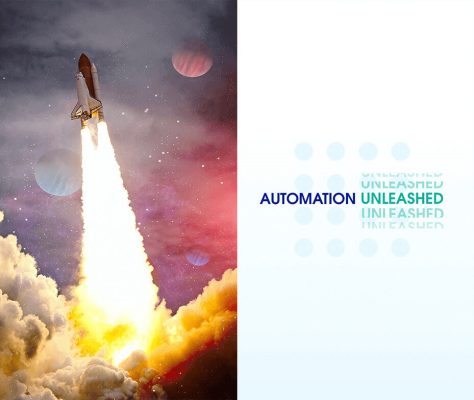How we make decisions that have long-lasting consequences is a strangely underappreciated skill. Making good decisions is hard – especially when the stakes are high. The biggest missteps in business become notorious. Today, enterprise automation is the decision that every business needs to make to support itself through this recession and beyond. Automation is powerful and must be a part of your long term plan.
Business automation fabric
Sixty-five percent of organizations are still either piloting a single process automation or have not started their automation journey. Automation can offer many opportunities for optimization and cost reduction. A Forrester report lays it out succinctly: “tactical, cost-focused automation disconnected from digital transformation goals” has resulted in:
- Siloed automation (what Forrester refers to as “Islands of automation”)
- Overreliance on a single automation technology
- A short-term approach to automation whereby “pockets of inefficiency are patched up” but long-term modernizations investments are avoided
Integration (iPaaS), low-code software, machine learning, conversational AI, RPA, DPA, analytics and process intelligence are technologies that overlap and intersect one another. They converge into a broad weave – an “automation fabric” – which combines digital workers and AI agents such as chatbots with process and data workflows, connected through event-based and integration-centric orchestration.
The automation fabric is weaving together diverse technologies to reduce the complexity of underlying application and process landscapes. It forms a superstructure for enterprises to rethink their products, services, operations and business models. When this occurs, the fabric starts acquiring characteristics such as processes woven throughout, and the ability for applications to express themselves through the fabric. To start, leaders must weave together automations in a thoughtful, scalable, and managed way.
How to make the right decisions with business automation
Deciding what to automate is difficult in unpredictable environments created by stressors such as macroeconomic events, supply chain interruptions, or even a global pandemic. Decision-makers often react to uncertainty by making instinctive decisions based on previous choices that may or may not have had optimal outcomes.
How can you make decisions at the speed necessary to address rapidly evolving situations? To address this uncertainty, your organization needs to ask this series of questions:
- Why automate?
- How much money will it cost to automate?
- How significant is the business impact and value?
- How complex is the process we are automating, and how does the process change?
- What changes need to be embraced organizationally and culturally to make this work?
Choosing what to automate: prioritizing high-value and low cost
Once your business has identified the processes that need to be automated using questions above. It’s important to classify those processes using the Workato automation matrix below.

The Workato automation matrix
Using this matrix, you end up with four outcomes for any given process in the organization:
- Total automation (High-value, low cost): This is a great option. It’s cheap and powerful, and there’s no reason not to proceed.
- Consider automation (High-value, high cost): If it is expensive but valuable, it may be worth doing, but it also may be worth postponing.
- Semi-automation (Low-value, low cost): If it is cheap to automate but also not particularly impactful, it still may be worth a low-effort automation plan.
- Avoid automation (Low-value, high cost): Stay away. Do not waste organizational resources on something that is expensive with very little output value.
Automation success factors
Decision-makers in the US credited three success factors for automation initiatives:
- A strong understanding of business processes automated (70%)
- Advanced planning (63%)
- Having a simple workflow to automate (50%)
Conversely, the two leading factors behind failure were the complexity of projects (57%) and not fully understanding the intended automated process (39%). US decision-makers believe robotic process automation (RPA) will be most valuable for improving customer experience (40%) and financial planning (38%).
Automation decisions for success now
Leaders must weave together automations in a thoughtful, scalable, and managed way. The creation of the automation fabric for your organization must be on your roadmap for 2023 and beyond. Focusing your efforts on identifying high-value, low-cost automation opportunities will deliver the best results.









